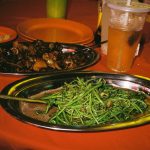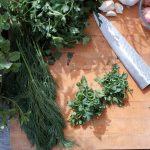Mastering Knife Skills: Key Tips for Efficient Cooking
Safe Knife Usage
Knife safety is essential in any kitchen to prevent injuries and maintain proper tool conditions. Taking a few precautions and organizing knives effectively will greatly benefit any chef’s experience.
Avoiding Common Injuries
Understanding common knife-related injuries can significantly reduce potential accidents. Many injuries occur when fingers or hands come into contact with the blade while cutting food. Ensuring a proper grip is crucial; fingers should remain tucked under the guide hand to prevent cuts.
Dull knives contribute to mishaps, as they require excessive force, leading to slips. Regular sharpening helps maintain control and precision. Hand positions also play a key role; keeping knuckles as barriers between the blade and fingers while cutting can significantly minimize risks.
Slips and accidental drops are other common causes of injuries. It is vital to cut on stable, dry surfaces. If a knife begins to fall, stepping back and allowing it to fall safely is recommended instead of attempting to catch it.
Proper Knife Storage
Storing knives correctly extends their lifespan and ensures a safer culinary environment. Loose knives in drawers pose hazards, as reaching in without looking can lead to cuts. This risk is reduced by using designated knife holders or storage solutions that securely anchor the blades.
Magnetic strips are a popular storage choice. They keep knives visible, accessible, and organized, offering a practical solution while preventing accidental hand contact. It is also crucial to ensure that sharp edges are directed away when placed or retrieved from racks.
Knife blocks provide an alternative storage method. They offer safety by confining blades within compartments, effectively protecting users. Whichever method is chosen, maintaining a clean, dry storage area prevents rust and damage, ensuring knives remain in optimal condition for daily use.
Integrating Knife Skills into Recipes
Effective knife skills significantly enhance cooking by improving efficiency and presentation. Mastery of these skills not only alters ingredient texture but also influences how flavors blend in recipes.
Recipe Adaptation
Recipes often require specific knife techniques to achieve desired results. For instance, recipes calling for julienned vegetables rely on consistent cuts to ensure even cooking. When adapting recipes for salads, dicing brings both uniformity and aesthetic appeal.
Accurate cuts minimize cook time by ensuring all pieces cook evenly. This efficiency is especially crucial in stir-fries, where inconsistent cuts lead to uneven cooking. Knife skills transform a simple dish by maintaining texture integrity, emphasizing the importance of adjusting cut size and shape to suit each culinary task.
Importance of Cuts in Cooking
The type of knife cut affects the seasoning absorption, which can elevate a dish’s flavor profile. For example, thinner slices of meat allow marinades to penetrate more deeply, enhancing taste. Precise cuts also affect cooking times.
Uniform cuts maintain texture, preventing some ingredients from becoming overcooked while others lag behind. Mastery of knife skills ensures not only visual appeal but also contributes to consistent taste and texture. This adherence to precision allows the harmony of flavors and seasoning in various culinary creations, establishing an essential foundation for any skilled cook.



